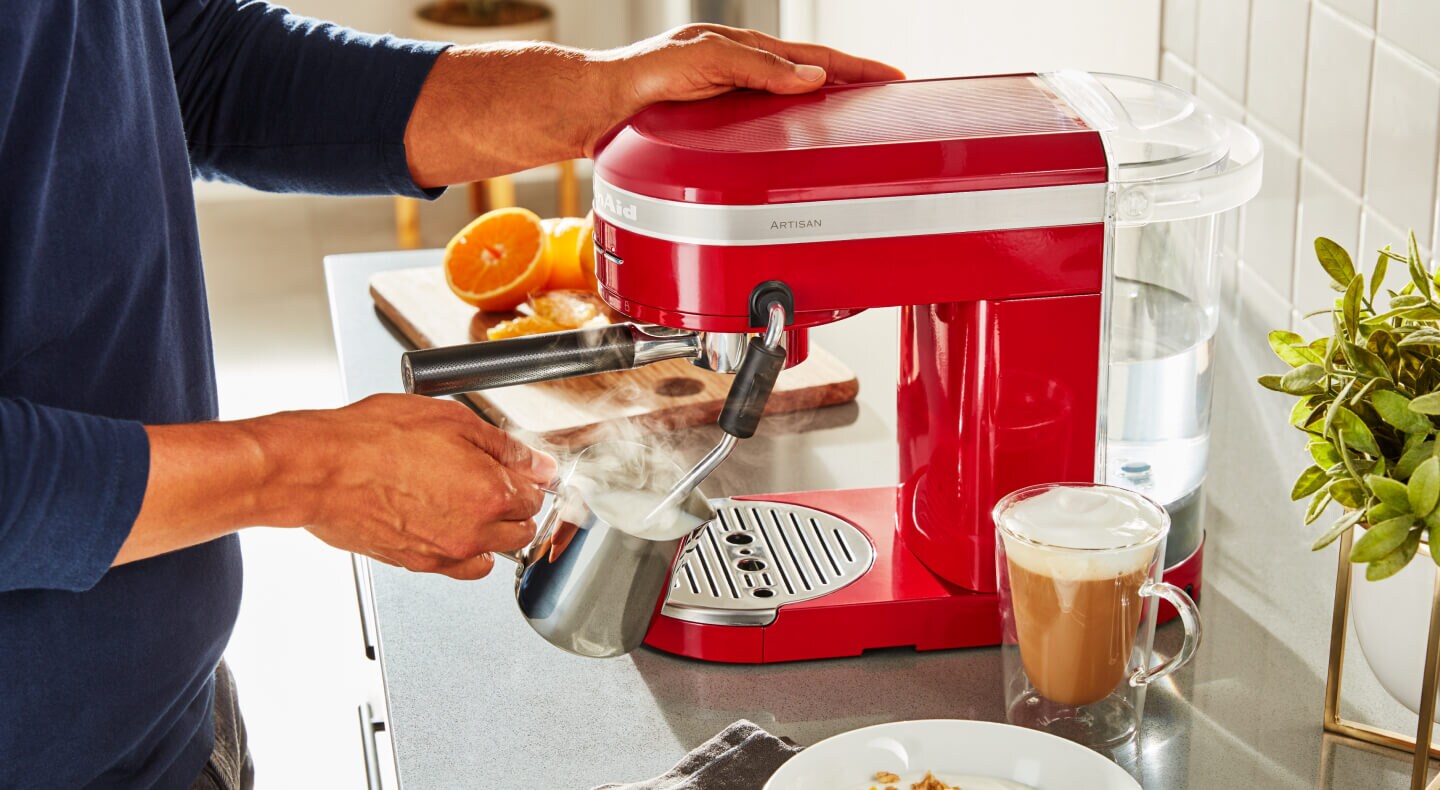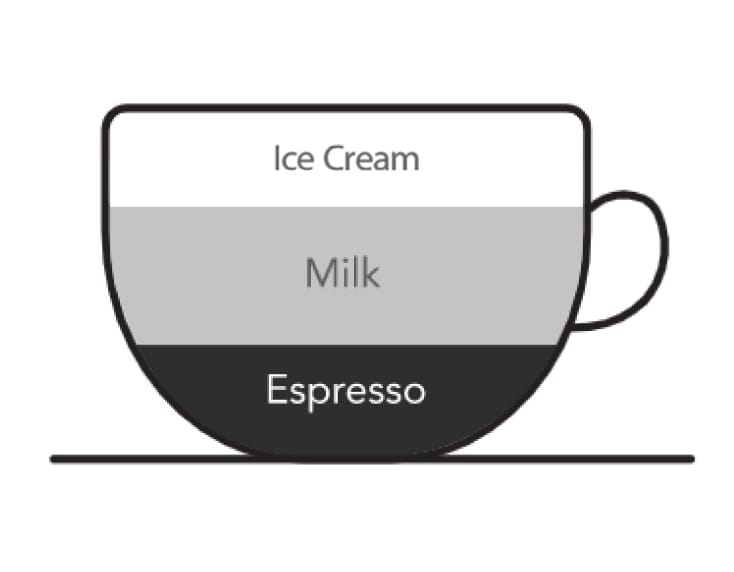
TYPES OF ESPRESSO MACHINES: MANUAL VS. SEMI-AUTOMATIC VS. AUTOMATIC
There are few things more satisfying than pulling a delicious shot of rich, dark espresso with a thick layer of crema on top. The journey of espresso to your cup varies quite a bit based on what type of espresso machine is used. Learn the difference between the three main types of espresso machines—manual, semi-automatic and fully-automatic—and find out which one is the best option to keep fueling your passion for coffee.
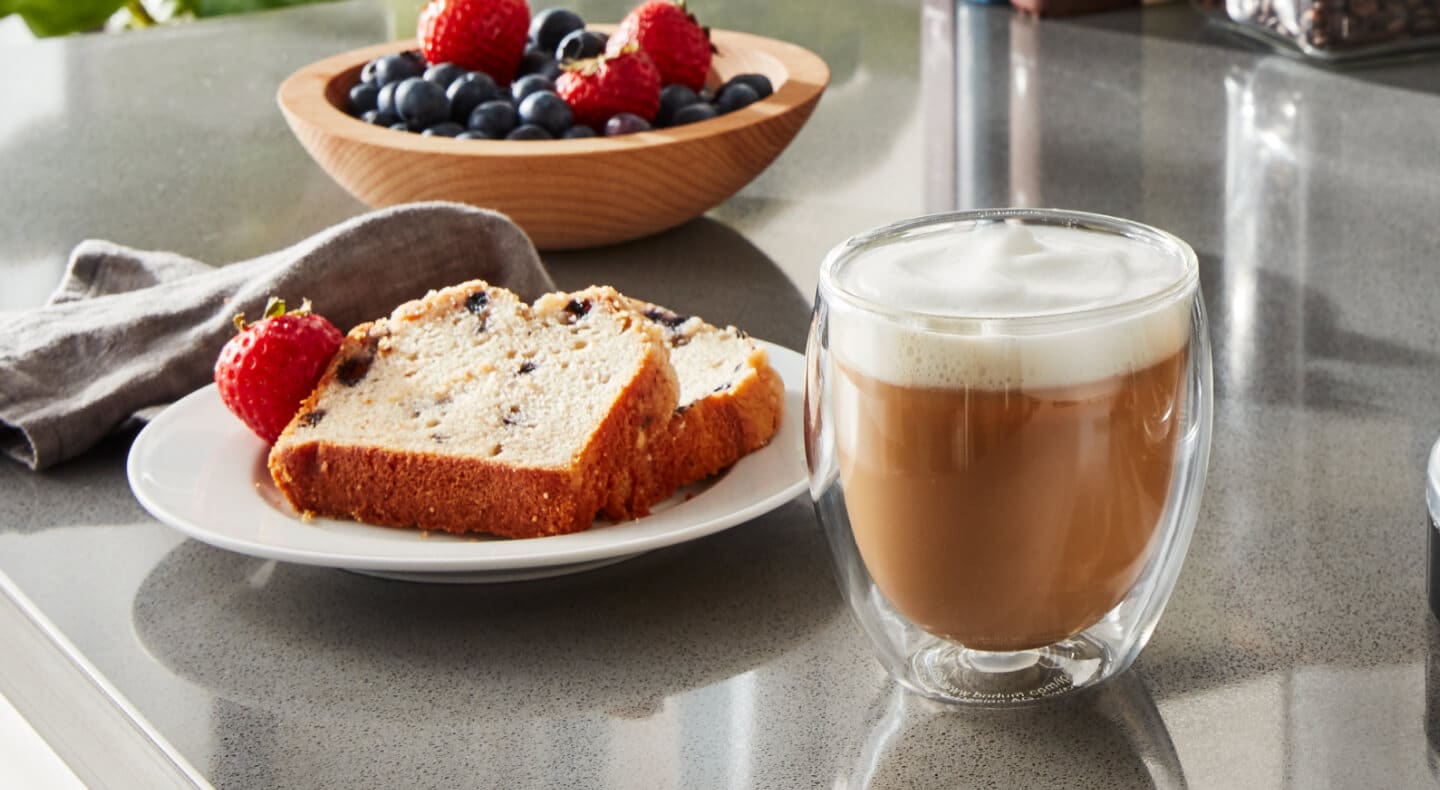
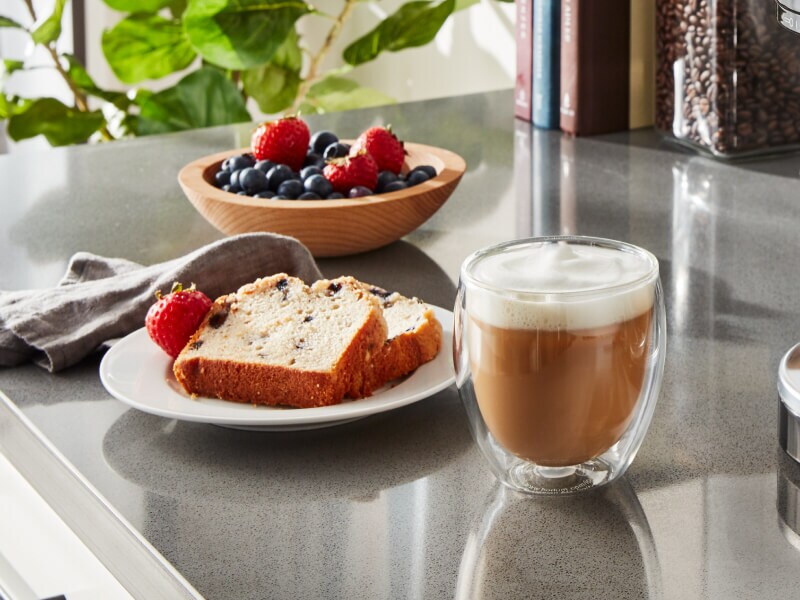
WHAT IS A MANUAL ESPRESSO MACHINE?
A manual espresso machine is operated by pushing and pulling a lever. As you raise the lever, it draws water into the brewing chamber to saturate the coffee grounds (a step known as pre-infusion). Pulling the lever back down creates pressure, forcing the water through the coffee grounds and into your cup below. The term “pulling a shot” comes from this type of manual espresso machine.
The exact design varies between models, but the basic idea is the same. With a fully manual espresso machine, you can control the pre-infusion period, the pressure and the water flow rate to customize it for each type of coffee or desired flavor profile.
ARE MANUAL ESPRESSO MACHINES BETTER?
If you are an espresso aficionado, you may prefer a manual espresso machine for the amount of control it gives you. The trade-off is that the quality depends largely on your skill level and can be inconsistent from shot to shot. Many manual espresso machines don’t have temperature sensors, automated pressure or other features to ensure consistent water temperature, pressure and timing during brewing. Getting the right pressure and timing are in your hands, which can make this type of espresso machine the most tricky to use.
PROS OF A MANUAL ESPRESSO MACHINE
Full control over every aspect of the brew
Ability to vary the pressure profile
Eye-catching machine design
CONS OF A MANUAL ESPRESSO MACHINE
Can produce inconsistent results
Can be difficult to use without expertise
Requires constant monitoring
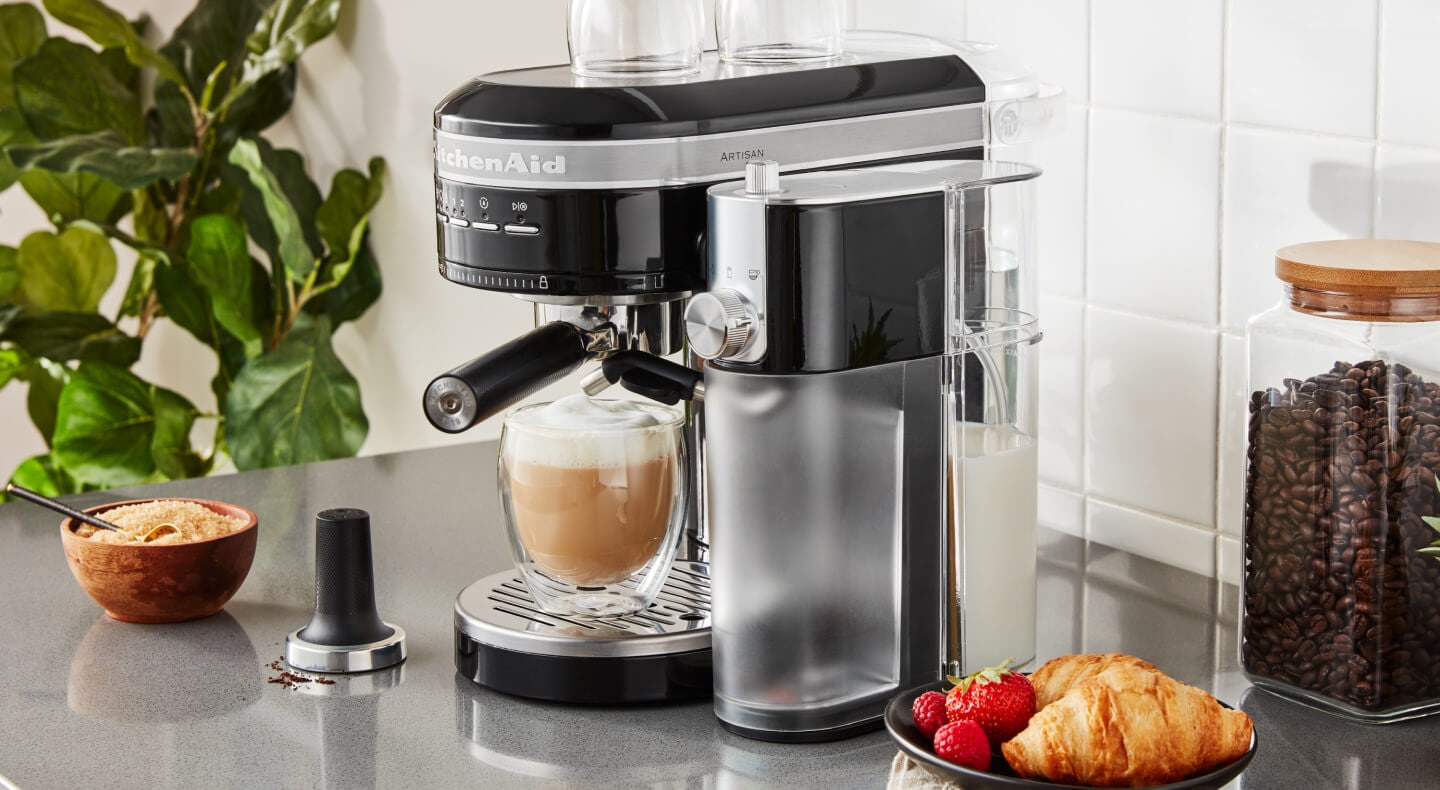
WHAT IS A SEMI-AUTOMATIC ESPRESSO MACHINE?
This type of machine helps you create delicious espresso at home without needing to be an expert. All you’ll need to work a semi-automatic espresso machine is a love of coffee and a little curiosity. With a semi-automatic espresso machine, you'll grind and tamp the coffee beans, lock in the portafilter and choose your settings (number and size of shots). Then, just press a few buttons and an electrical pump will automatically move water through the brewing chamber at the right pressure, temperature and time—no manual pulling or timing required.
Some semi-automatic espresso machines allow you to manually control the pre-infusion time and amount of water used, but these are usually found on commercial models in professional coffee shops. Residential semi-automatic espresso machines are known for producing consistent results with ease while still giving you enough control to experiment and get creative.
PROS OF A SEMI-AUTOMATIC ESPRESSO MACHINE
More consistency through automated processes
Still allows for control and customization of some factors
Easy to use, even for beginners
Mid-range price point options
CONS OF A SEMI-AUTOMATIC ESPRESSO MACHINE
Less control over some variables
Requires some manual skill
Large variation of features within the category
KITCHENAID® SEMI-AUTOMATIC ESPRESSO MACHINE
KitchenAid® Semi-Automatic Espresso Machines are thoughtfully designed to control the most critical variables of espresso for authentic-tasting results at home while putting the shot size, grinding and tamping in your hands for the freedom to craft your perfect cup. KitchenAid® Semi-Automatic Espresso Machines help you consistently pull flavorful shots through a balance of automated processes and features designed to aid your at-home barista journey.
To add simplicity and convenience to your brewing routine, KitchenAid brand offers a semi-automatic espresso machine with a built-in burr grinder. With this feature, you can count on a consistent grind that’s personalized to your preferences without the added hassle of an additional appliance.
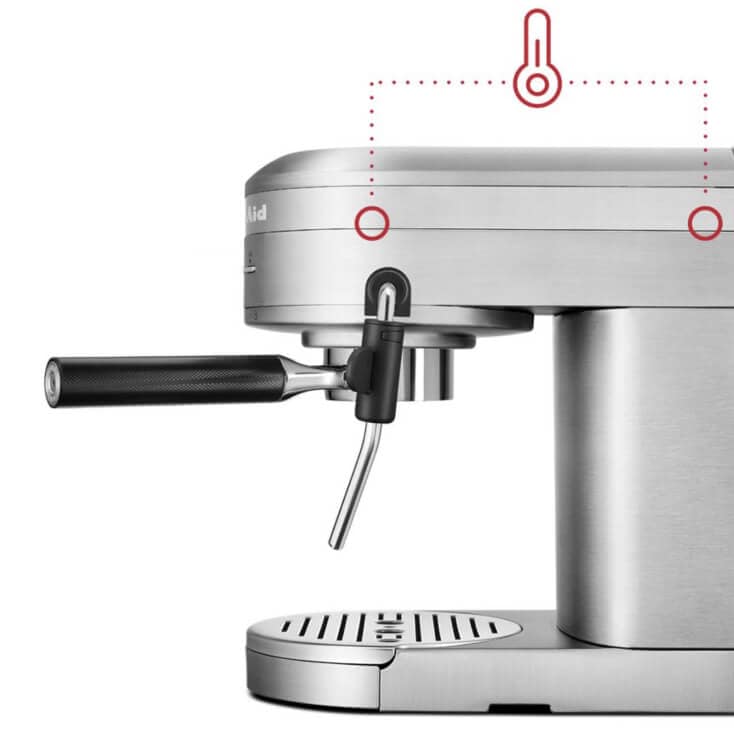
DUAL, SMART TEMPERATURE SENSORS
Select models feature sensors that actively communicate with each other throughout the brew process to ensure optimal temperature and an authentic tasting espresso. The fast-heating, thermocoil technology heats up water to the ideal brewing temperature in less than 45 seconds.
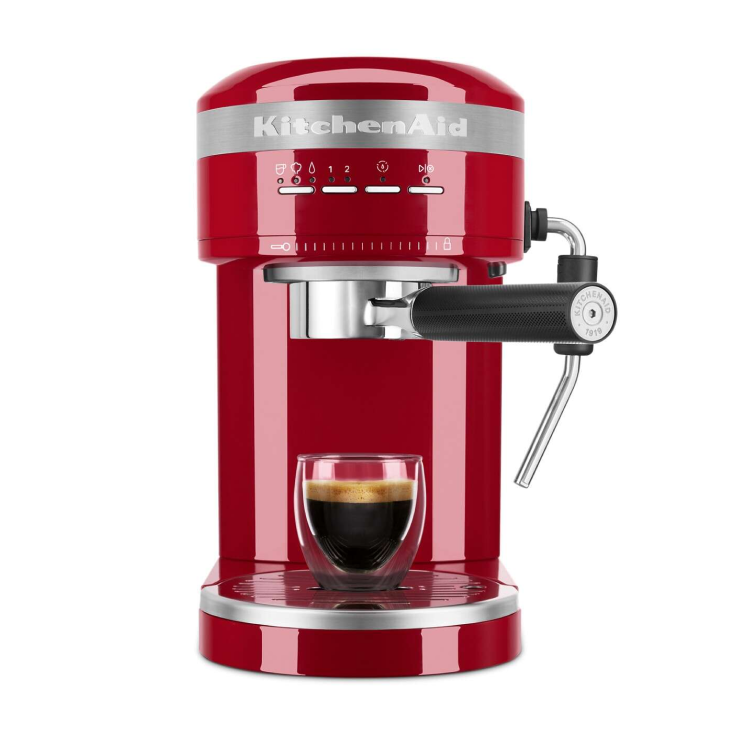
Pre-Infusion and 15-Bar Italian Pump
The low pressure pre-infusion, which slowly and steadily adds water to ground coffee to expand before extraction, and the optimal pressure from the 15-bar Italian pump on some models work together to make a deliciously rich, thick crema.
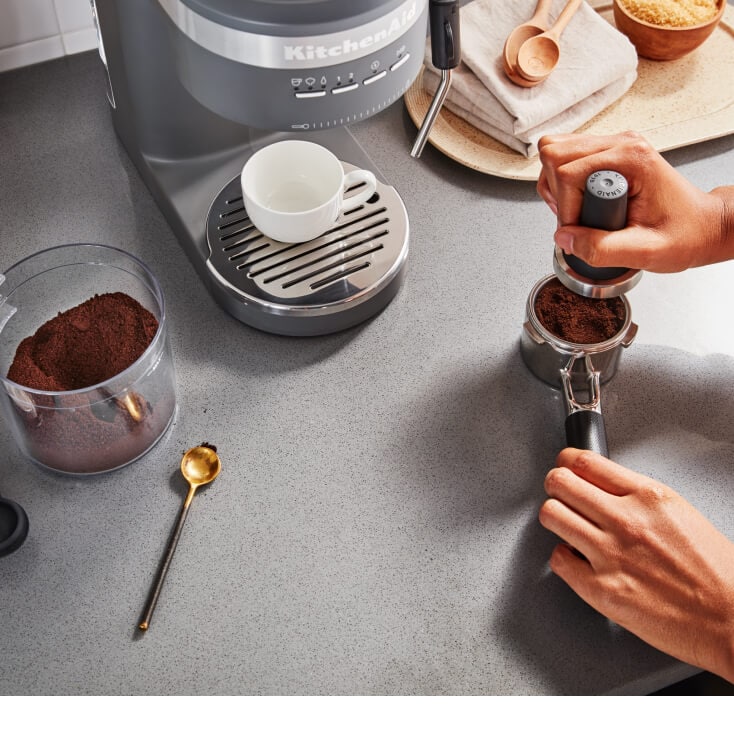
Flat, 58-mm Commercial-Grade Portafilter
The uniquely-designed portafilter on select models helps maintain optimal heat through extraction. It features two recessed spouts to enable a flat base for easier, more stable tamping compared to traditional residential espresso portafilters. Choose between single wall baskets for greater control of full-bodied shots, and double wall, pressurized baskets that help reduce extraction variability.
SHOP KITCHENAID® SEMI-AUTOMATIC ESPRESSO MACHINES
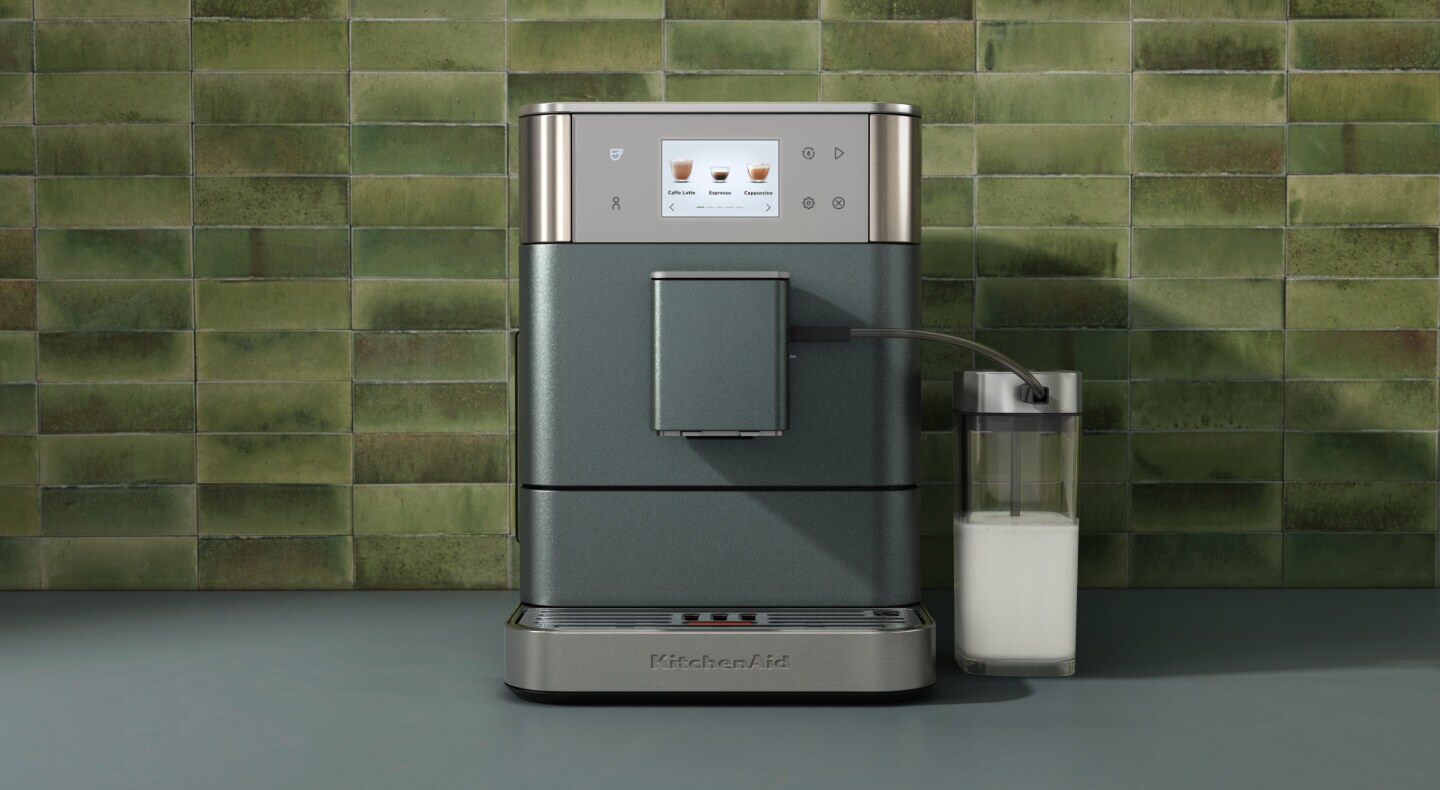
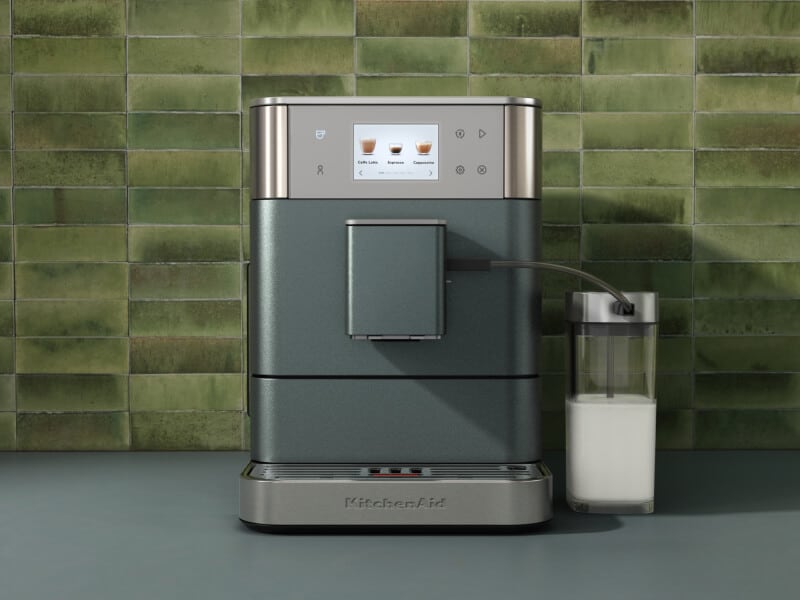
WHAT IS A FULLY-AUTOMATIC ESPRESSO MACHINE?
Fully-automatic, or super-automatic, espresso machines give you espresso at the touch of a button. They often have built-in coffee grinders with brewing mechanisms that will automatically grind coffee, fill and tamp the basket, then brew a predetermined amount of espresso.
Fully-automatic machines frequently feature a touchscreen interface for selecting preprogrammed drink recipes or building and saving your own custom brew. Automatic milk frothers are often built into the machine to give you the exact amount of milk needed for each unique recipe, letting you create premium, handcrafted drinks at home.
A pod espresso machine is a type of super-automatic or ultra-automatic espresso machine. This type of at-home espresso maker simply requires dropping in a capsule with premeasured ground coffee inside, then pressing a button. Pod espresso machines are convenient, but you’ll be limited to the types of coffee available in the pods that fit your model. There are also generally very limited options for customizing your brew to your preference.
These hands-off automatic espresso makers can produce highly consistent results, but leave less room for experimentation. If you prefer to hand-craft your coffee, this type of espresso machine may not give you enough control.
PROS OF A FULLY-AUTOMATIC ESPRESSO MACHINE
Extremely easy to use
Produces consistent results
Offers all-in-one systems
Allows customization for strength, temperature and shot length
May let you personalize and store your favorite recipes for quick access
- Allows for seamless grinding of coffee beans from a bean hopper
CONS OF A FULLY-AUTOMATIC ESPRESSO MACHINE
Less control over the brewing process compared to manual and semi-automatic espresso machines
More limited coffee bean options (if opting for a pod machine)
Generally a higher entry price point than manual and semi-automatic machines
KITCHENAID® FULLY-AUTOMATIC ESPRESSO MACHINES
Indulge in café-quality espresso drinks right at home with a KitchenAid® Fully-Automatic Espresso Machine. With just a press of a button, select models let you explore 40+ recipe options and tailor each cup to your taste when you customize the strength, length and temperature of your brew. Whether you prefer your milk steamed, heated or frothed to perfection, these machines have it covered, providing barista-style results right in your home.
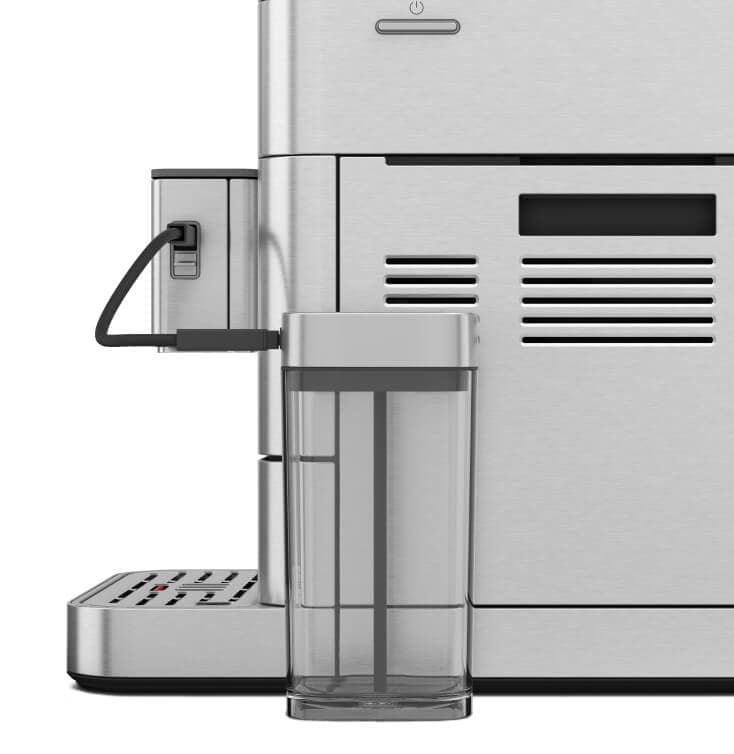
CUSTOMIZED TEMPERATURE SETTINGS AND RAPID HEATING
Take control of your coffee experience by customizing your brew with low, medium or high temperature settings, ranging from 189-205°F. Thanks to a single thermocoil, your water can flash-heat to the set brewing temperature in under 40 seconds. And for that finishing touch, a built-in cup warmer helps ensure your cup stays at the ideal temperature until you’re ready to sip.
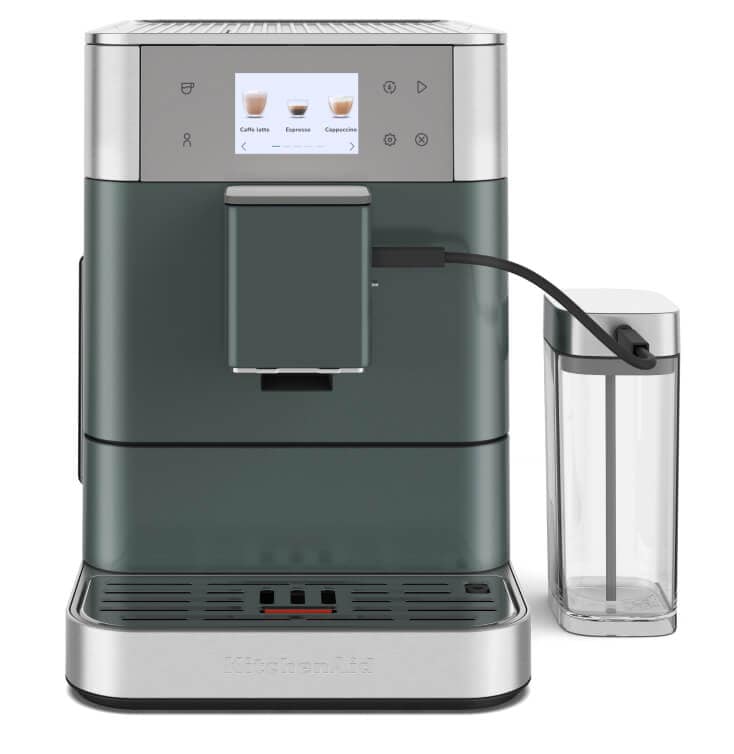
PRE-INFUSION AND 15-BAR ITALIAN PUMP
The 15-bar pump delivers the optimal pressure for a rich, full-bodied espresso. Its low-pressure pre-infusion gently wets the grounds, allowing them to bloom before full extraction. This pressure ensures a consistent brew temperature, lets you use the machine continuously without the need to cool between shots and provides a velvety crema in every cup.

FLAT, 58-MM COMMERCIAL-GRADE PORTAFILTER
The uniquely-designed portafilter on select models helps maintain optimal heat through extraction. It features two recessed spouts to enable a flat base for easier, more stable tamping compared to traditional residential espresso portafilters. Choose between single wall baskets for greater control of full-bodied shots, and double wall, pressurized baskets that help reduce extraction variability.
SHOP KITCHENAID® FULLY-AUTOMATIC ESPRESSO MACHINES
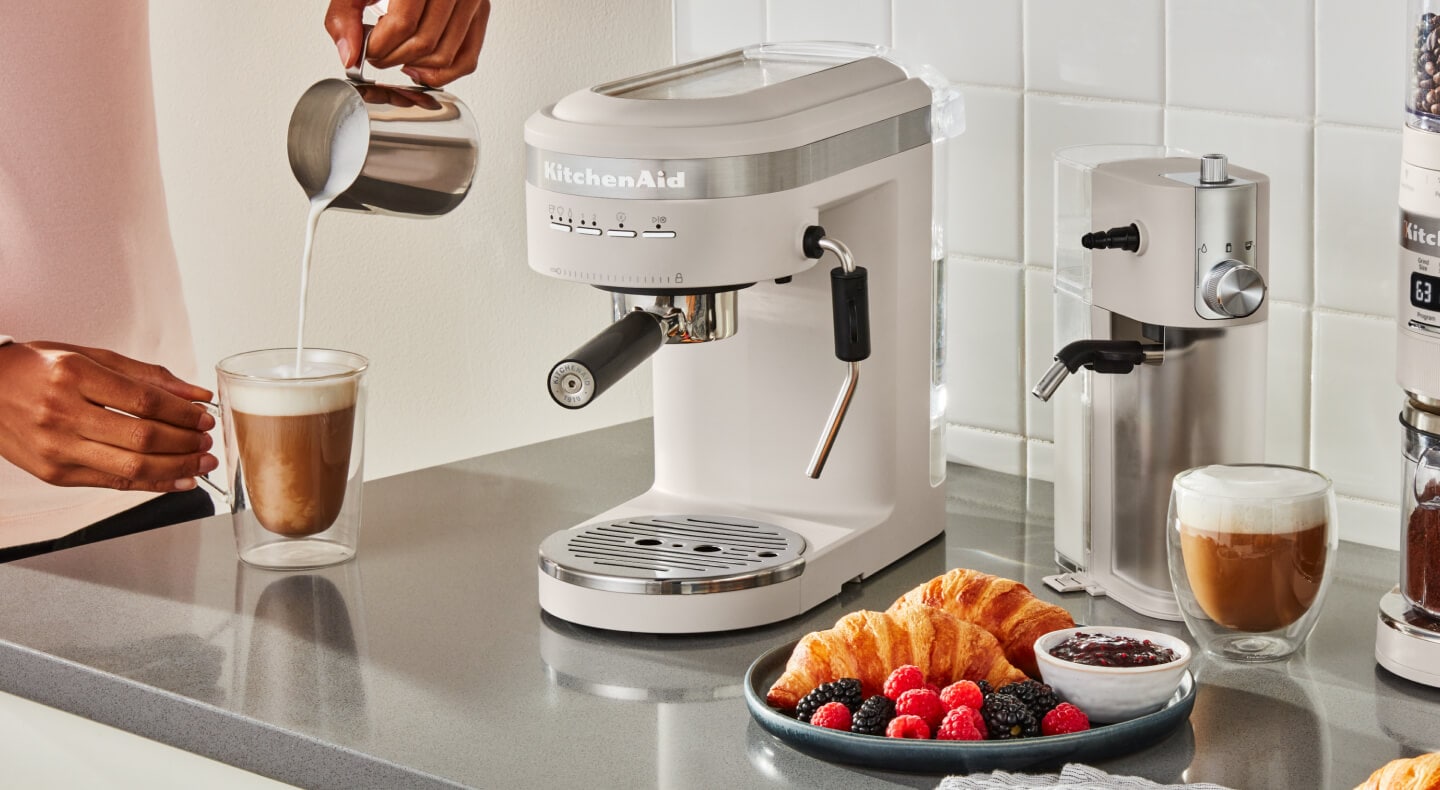
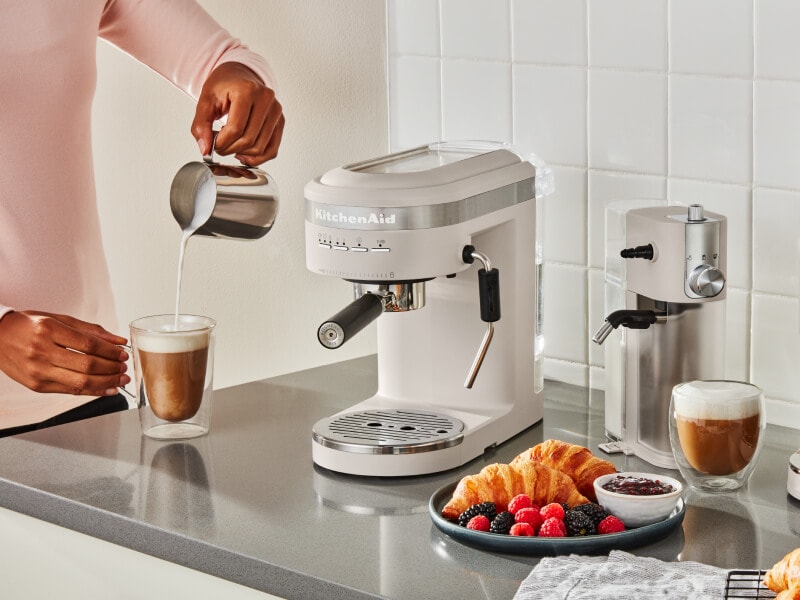
FACTORS TO CONSIDER WHEN BUYING AN ESPRESSO MACHINE
Your perfect shot of espresso is unique to you and your needs. Here are some factors to consider when deciding which at-home espresso machine is best for you.
EASE OF USE VS. CONTROL
In general, you’ll give up some control for ease of use and consistency when it comes to different types of espresso makers.
A manual espresso machine allows you to tweak nearly every aspect but requires a higher skill level.
Semi-automatic espresso machines automate some of the most important aspects like temperature and pressure to produce consistent results, but do require some skill from you.
Automatic espresso machines consistently deliver high-quality espresso at the push of a button, with some models offering more customizable settings than others.
How involved you want to be in crafting your cup is a major factor to consider. Manual espresso machines often give the user more hands-on control when crafting their cup of coffee, while the machine often controls more consistent results in the semi- and automatic espresso machine options.
ESPRESSO MACHINE GRINDER
Great espresso starts with great beans and a fresh, uniform grind. If you want to automate this part, opt for an espresso machine with a built-in grinder, but keep in mind that settings may be limited. A standalone burr grinder might offer you more control to vary your grind and quantity per type of bean and shot.
The KitchenAid® Burr Coffee Grinder offers 70 settings for a variety of brewing methods while the Automatic Smart Dosing Technology takes the guesswork out of dosing and automatically adjusts grind time to deliver the proper volume and consistency.
STEAM WAND OR MILK FROTHER
Frothed milk is a key ingredient in transforming espresso drinks, whether you're after a creamy, silky texture or a light and airy foam. Semi-automatic machines typically give you control over the process, using an attached steam wand or milk frother, while fully-automatic machines can handle it all for you with built-in frothers.
Steam wands use heat and pressure to aerate milk, while milk frothers rely on rapid agitation to create foam. Some electric frothers even warm the milk as they froth, delivering a velvety consistency.
The KitchenAid® Automatic Milk Frother Attachment brings automatic frothing and dosing capabilities to the KitchenAid® Semi-Automatic Espresso Machine. The attachment replaces the steam wand and prepares milk for delicious lattes, cappuccinos and more with the adjustment of just a few dials.
The programmable dosing and a variable microfoam adjuster allow you to customize the milk amount and texture to match your taste and preference. Add the Automatic Milk Frother attachment to your machine, or bundle them together for the best of manual and automatic features. Learn more tips for using a milk frother to create your favorite drink recipes.
WHAT CAN YOU MAKE WITH AN ESPRESSO MACHINE?
Espresso forms the rich coffee base of a range of cafe favorites like lattes, cappuccinos and Americanos. Most espresso machines include a steam wand or milk frother that helps you create creamy milk and thick foam to mix in, but you can also buy milk frothers separately. A less traditional use is brewing tea using the hot water dispenser on select models of espresso machines for a calming cuppa or a tea latte.
TYPES OF ESPRESSO DRINKS
If you want to create lattes, cappuccinos and more at home, look for an espresso machine that includes a steaming wand. To make this part even easier, you can find types of espresso machines with automatic milk frothers that create your favorite beverages at the push of a button.
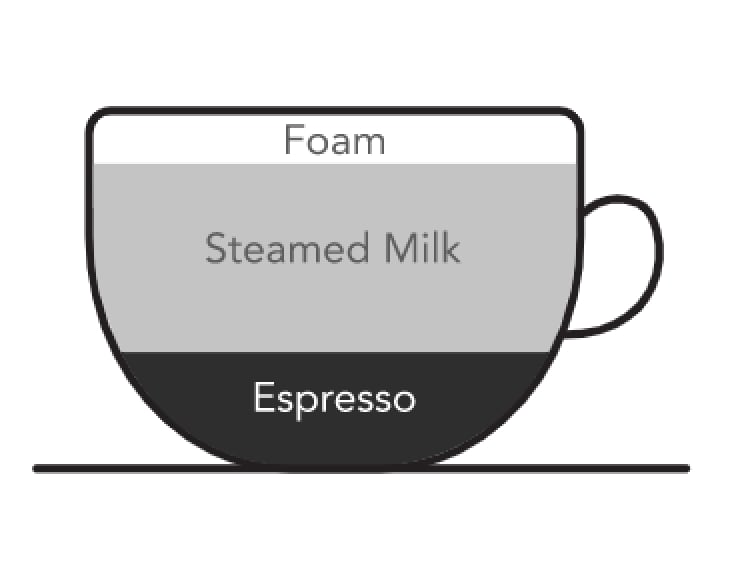
LATTE: ESPRESSO + STEAMED MILK + FOAM
This popular drink consists of 1/3 espresso and 2/3 milk, plus a thin layer of foam on top. The latte can be enjoyed on its own or can serve as the base for other popular drinks like mochas and lavender vanilla lattes.

CAPPUCCINO: ESPRESSO + STEAMED MILK + FOAM
A cappuccino uses equal parts espresso, steamed milk and foam. This allows the coffee flavor to dominate while still incorporating the silky textures of milk and foam.

FLAT WHITE: ESPRESSO + STEAMED MILK
A flat white has less steamed milk than a latte, but more steamed milk and less foam than a cappuccino. You’ll add 3.5 oz. of steamed milk to 2 oz. of espresso. This is a great choice if you want a more coffee forward drink with a bit more milk than a cappuccino.
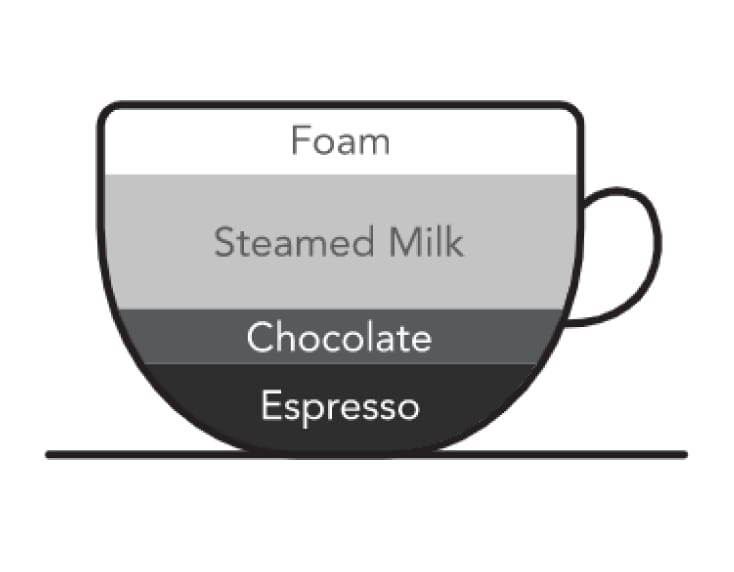
MOCHA: ESPRESSO + CHOCOLATE + STEAMED MILK + FOAM
A mocha is essentially a latte with chocolate in it. You’ll add chocolate directly to the espresso and plenty of milk to create a smooth, sweet coffee drink. Variations on this include caramel mochas, white chocolate varieties and even warm espresso cocktails.
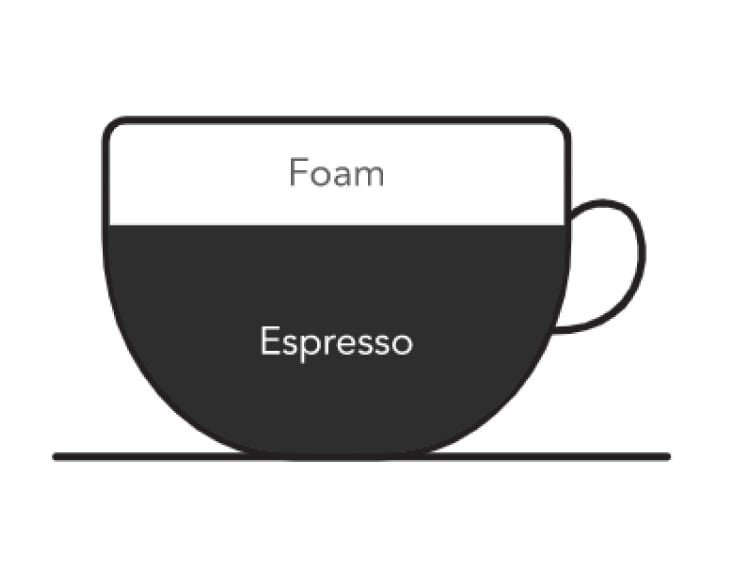
CAFFÈ MACCHIATO: ESPRESSO + FOAM
A traditional caffè macchiato is a shot of espresso and just a dollop of dry milk foam, or a 2:1 ratio. This shouldn’t be confused with a latte macchiato, which is espresso added to steamed milk, sometimes offered with flavored syrups.
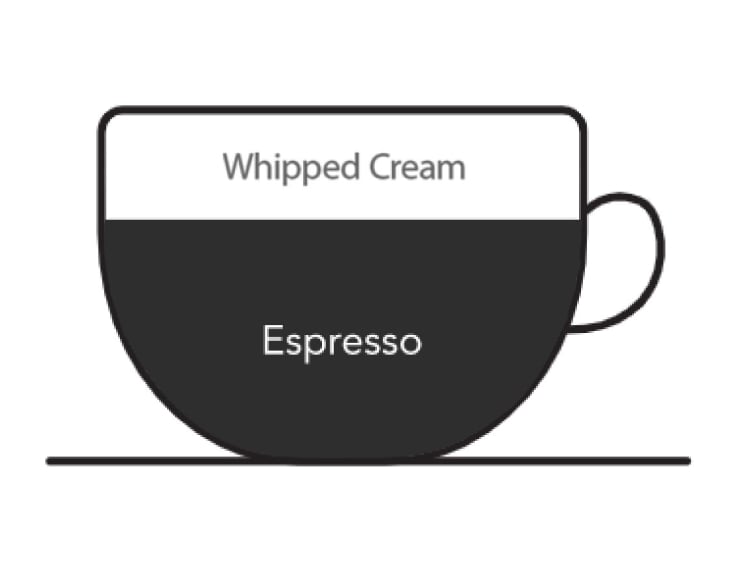
ESPRESSO CON PANNA: ESPRESSO + WHIPPED CREAM
A delightful and simple way to sweeten up your drink, the espresso con panna has gained popularity in recent years. Just pull a shot or two of espresso and top with a spoonful of fresh whipped cream.
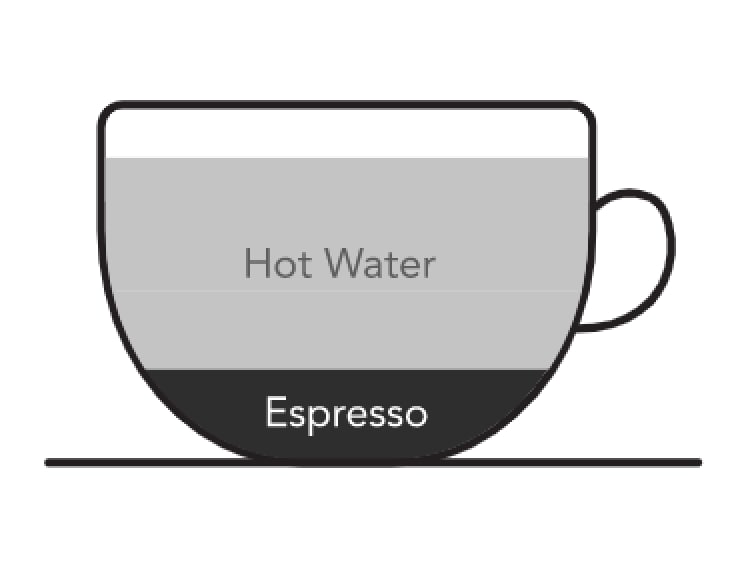
AMERICANO: ESPRESSO + HOT WATER
This option offers the bold, complex flavor of espresso but the volume of a drip coffee. The ratio is usually 2 parts water to 1 part espresso—no milk frother needed!
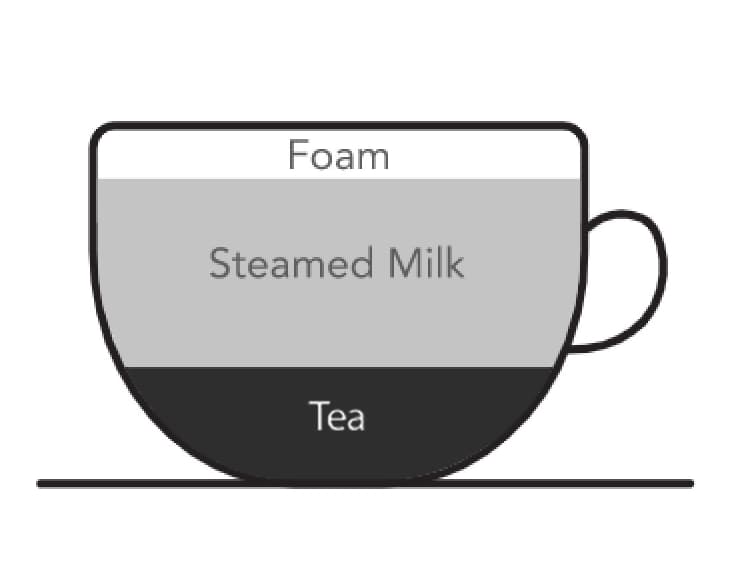
TEA LATTE
You can use hot water from your espresso machine to brew tea as well. Select the hot water setting (if available), brew tea and follow the ratios for your favorite espresso drink to create a variety of tea lattes.
Learn more about different espresso drinks and how to make them with this guide.
